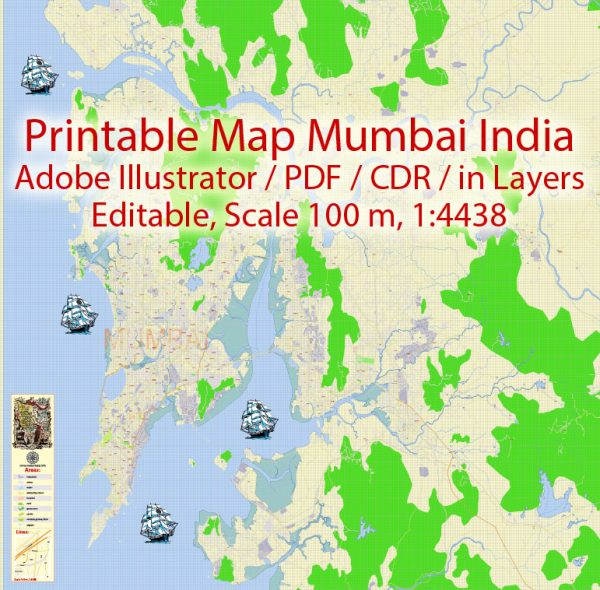Mumbai, India is a city known for its diverse and dynamic architecture, reflecting a rich history and a blend of different architectural styles. Here’s a description of some of the prominent architectural features and styles you can find in Mumbai:
- Colonial Influence: Mumbai has a significant colonial history, and this is evident in the many British colonial-era buildings. The Chhatrapati Shivaji Terminus (formerly Victoria Terminus) is a prime example. This UNESCO World Heritage Site boasts Victorian Gothic Revival architecture with ornate spires, turrets, and intricate stone carvings. Another colonial gem is the Gateway of India, a massive arch overlooking the Arabian Sea.
- Art Deco: Mumbai has the second-largest collection of Art Deco architecture in the world after Miami. This style is visible in the numerous residential and commercial buildings in South Mumbai. These structures typically feature bold, geometric designs, curved corners, and vibrant colors. The Marine Drive area is known for its Art Deco apartment buildings.
- Indo-Saracenic Architecture: This architectural style blends Indian and Islamic elements and can be seen in some of Mumbai’s older public buildings, such as the Prince of Wales Museum (now known as the Chhatrapati Shivaji Maharaj Vastu Sangrahalaya). It features domes, arches, and ornate details.
- Contemporary Skyscrapers: Mumbai has a modern skyline filled with towering skyscrapers. Prominent examples include the Palais Royale, Lodha World Towers, and the Imperial Tower. These contemporary structures showcase cutting-edge designs and technologies, often influenced by international architectural trends.
- Chawls: These are an important part of Mumbai’s architectural heritage. Chawls are multi-story tenements that are prevalent in the older parts of the city. They are characterized by long, narrow corridors with small apartments on either side and are an important part of the city’s social fabric.
- Places of Worship: Mumbai is home to a variety of religious landmarks, each with its architectural style. The Haji Ali Dargah is a stunning mosque built on an island in the Arabian Sea. Siddhivinayak Temple features traditional Hindu temple architecture. The Mahalakshmi Temple is another noteworthy religious structure.
- Bungalows and Villas: In the upscale neighborhoods of South Mumbai, you can find numerous grand bungalows and villas, often featuring a fusion of architectural styles. These are characterized by spacious layouts, lush gardens, and ornate exteriors.
- Modern Infrastructure: The Bandra-Worli Sea Link is a contemporary marvel of engineering and architecture. This cable-stayed bridge connects the western suburbs to South Mumbai and stands as a symbol of Mumbai’s modernity.
- Slums and Informal Settlements: While not traditional architectural landmarks, the slums and informal settlements in Mumbai are a significant aspect of the city’s urban landscape. Dharavi, one of Asia’s largest slums, is a prominent example and showcases an entirely different form of community-driven architecture and urban planning.
Mumbai’s architecture is a reflection of its history, culture, and rapid urban development. It encompasses a wide range of styles, from colonial grandeur to modern skyscrapers, and is a testament to the city’s diversity and complexity.



 Author: Kirill Shrayber, Ph.D.
Author: Kirill Shrayber, Ph.D.